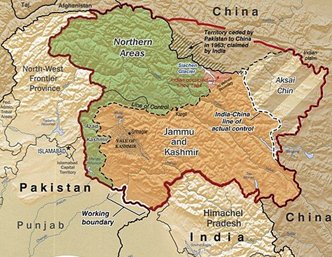KARGIL VIJAY DIWAS
Context:
- On July 26, 2025, India proudly commemorated the 26th anniversary of Kargil Vijay Diwas, a day dedicated to honoring the unparalleled courage and supreme sacrifice of Indian soldiers during the Kargil War of 1999.
- This significant national event remembers key battles in the Kargil War timeline and the heroes who reclaimed India’s strategic posts, including the iconic ‘Tiger Hill’.
KARGIL VIJAY DIWAS 2025
- Date: Observed annually on July 26th.
- Purpose: To honor the bravery and sacrifice of Indian soldiers who fought and laid down their lives during the Kargil War (1999).
- It is a national tribute to the armed forces for their valor in reclaiming Indian territory under challenging high-altitude conditions.
- Commemorations: Across the country, various events are organized in schools, military establishments, and public institutions.
THE KARGIL WAR: OPERATION VIJAY
- Nature of Conflict: A high-altitude conflict fought between May and July 1999 in the Kargil district of Jammu and Kashmir.
- Cause: Pakistani soldiers and militants secretly crossed the Line of Control (LoC) and occupied strategic Indian posts and peaks in the Kargil region.
- Their aim was to sever the vital Srinagar-Leh highway (NH 1A) and put pressure on India regarding Kashmir.
- Indian Response: India launched “Operation Vijay” to drive out the infiltrators and reclaim the occupied posts.
- Challenges: Indian forces faced extremely difficult terrain, harsh weather conditions, and significant altitude challenges, as the enemy had the advantage of occupying higher, fortified positions.
- Outcome: Despite the odds, the Indian forces demonstrated immense courage, determination, and military precision, successfully reclaiming all occupied peaks and achieving a decisive victory. The war officially ended on July 26, 1999.
- Indian Air Force Role: The IAF launched “Operation Safed Sagar” on May 26, 1999, providing crucial air support with targeted strikes on enemy positions.
- His marked the first large-scale use of air power in Kashmir since 1971 and proved decisive in altering the course of the battle without crossing international boundaries.
KARGIL WAR TIMELINE
- Early 1999: Pakistani militants secretly cross the LoC and occupy strategic peaks in the Kargil region.
- May 3, 1999: Local shepherds spot unusual activity and alert the Indian Army.
- May 5, 1999: Indian Army confirms intrusion and begins reconnaissance.
- May 10, 1999: India officially launches “Operation Vijay”.
- May 26, 1999: Indian Air Force initiates “Operation Safed Sagar”.
- Early June 1999: Indian troops regain control of several posts; evidence confirms Pakistani Army’s involvement.
- June 13, 1999: Indian forces successfully recapture Tololing, a key peak in the Dras sector.
- July 4, 1999: Indian Army recaptures Tiger Hill, a critical point overlooking the Srinagar–Leh highway.
- July 5, 1999: Pakistan begins pulling back its troops following mounting international pressure.
- July 11, 1999: Formal withdrawal of Pakistani forces from Kargil begins.
- July 14, 1999: Prime Minister Atal Bihari Vajpayee officially announces the success of “Operation Vijay”.
- July 26, 1999: The war officially ends with India regaining full control of the infiltrated areas.
KARGIL WAR MEMORIAL
- Location: Situated in Dras, Ladakh, near the Line of Control (LoC) and overlooks the very peaks that were battlefields (e.g., Tiger Hill, Tololing).
- It’s about 5 km from Drass city center and on the Srinagar-Leh National Highway 1D.
- Purpose: A solemn tribute built by the Indian Army to honor the soldiers who laid down their lives during the Kargil War 1999.

- Features:
- Sandstone Wall: Inscribed with the names of the fallen soldiers (527 names).
- Vijaypath (Victory Flame): A perpetual flame symbolizing the undying spirit of the fallen soldiers.
- Wall of Remembrance: Displays names of soldiers from the Indian Army, Air Force, and Navy.
- War Gallery/Museum: Showcases photographs, weapons, equipment, and artifacts related to the Kargil War, providing insights into the challenges faced by the armed forces.
- Drass War Room: Contains information panels and maps detailing military operations.
Note: Connect with Vajirao & Reddy Institute to keep yourself updated with latest UPSC Current Affairs in English.
Note: We upload Current Affairs Except Sunday.

